5 Tips For Writing Compelling Ad Copy That Converts [With Examples]
Do you ever scroll through your social media feed or search engine results and find yourself clicking on certain online ads without really knowing why? Chances are, those paid ads had one thing in common: captivating ad copy. Crafting such ad copy is an art, and you don’t have to be a wordsmith to master it.
Imagine if your words had the power to turn idle scrollers into eager buyers or intrigued readers into loyal subscribers. The truth is, they can. Whether you’re a business owner, marketer, or someone curious about the world of advertising and online marketing, understanding the secrets of compelling ad copy can transform your digital presence.
Join us as we delve into the psychology behind effective ad copywriting, dissect proven advertising techniques with relevant copywriting examples, and guide you in creating your own attention-grabbing content. After all, the right words can do more than just convey a message – they can inspire action.
So, let’s dive in and check out the 5 key copywriting tips that will enable you to create ad copy that delivers remarkable results.
1. Show your prospects how you’ll solve their problem
Whether it’s a service advertisement or a product ad, clearly communicate how your product or service can address the customer’s pain points or fulfill their needs. Focus on the solutions and benefits your offering brings.
Add Value:
Highlight the value your product or service provides rather than just listing its characteristics. Mention the features along with how and what benefits it will bring to the consumers. It will create a connection that ultimately will spark their interest.
Your marketing copy’s advertising purpose should be to explain how it can improve their lives or solve their problems. Benefits answer the question, “What’s in it for me?” and appeal to the emotional aspect of decision-making.
Check out this sample ad copy example with a headline and description for a common household kitchen product.
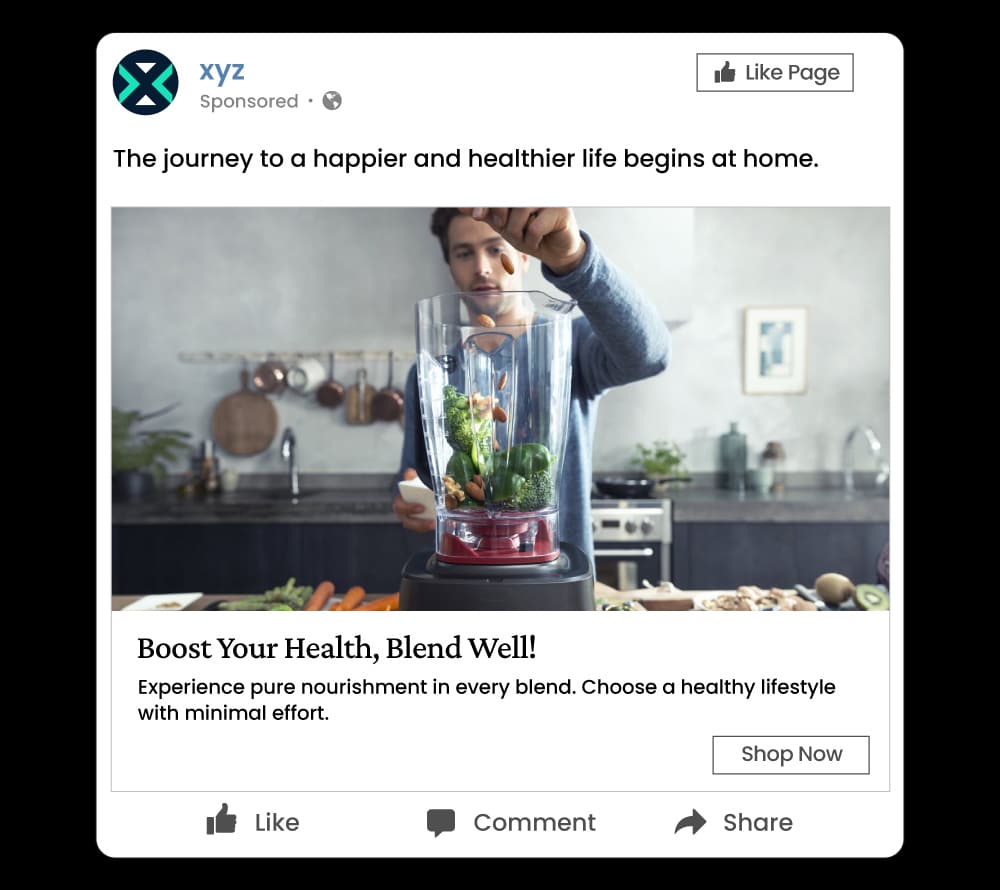
Here, the focus is on the benefits of the blender, such as improved health and convenience, rather than just listing its technical features. That’s why people end up buying it. Not because of the ‘how does it work’ but cause of ‘what can it do for me’?
Include emotional triggers:
Appeal to your target audience’s emotions by using words or phrases that evoke positive feelings or empathy. Words like “happy,” “excited,” “relieved,” or “confident” can evoke positive emotions and create a sense of emotional connection between your offering and your prospects.
For example, think of it like this. On your way to work on a busy day, someone is selling children’s books on a roadside stall. But the same day, while you are online, you see a social media ad that reads like this,
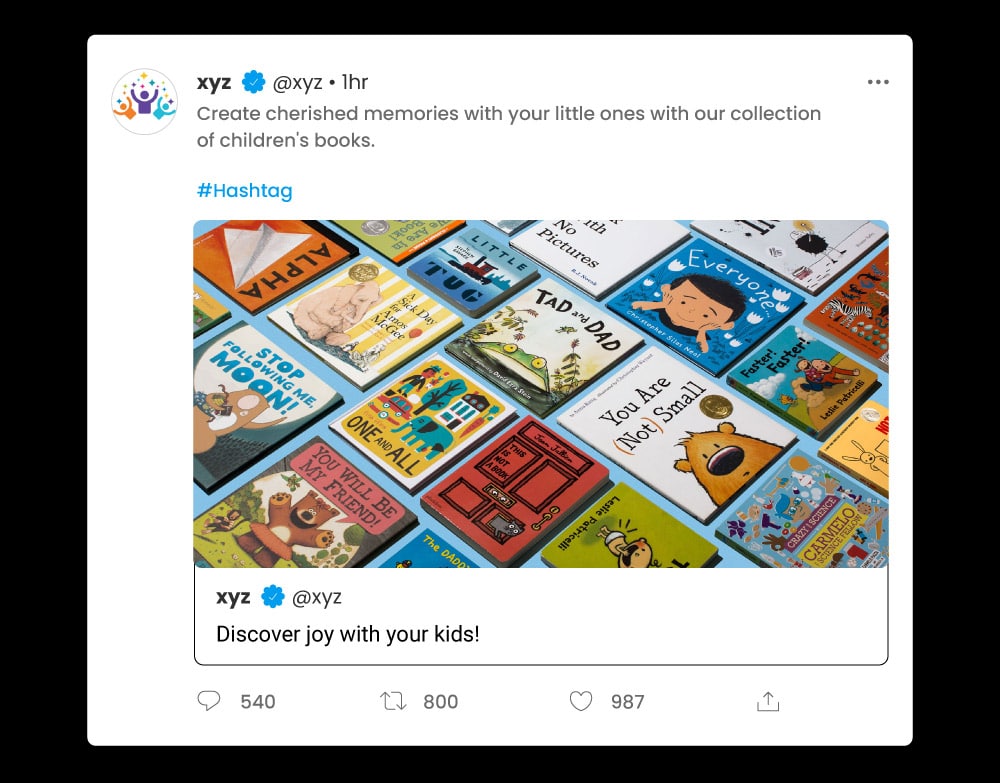
The product is still the same. The only difference is in the approach to selling. As shown in the above ad copy example for a product ad, we can get the desired results from the prospects by leveraging emotional triggers.
Address their concerns and pain points:
Anticipate and address any objections or concerns your prospects may have. Show empathy and provide reassurance to build trust and credibility. Ensure your ad copy offers solutions to alleviate their issues or pain points, positioning your product or service as the answer they’ve been looking for.
Amidst all the chaos and stress, people love nothing more than getting their hands on things that can solve their problems and make their lives easier to navigate. To emphasize our point, here’s an example of an ad copy
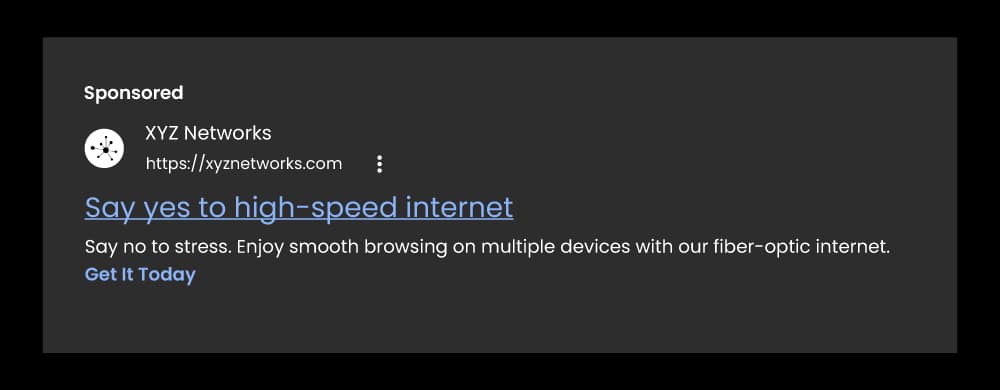
Wouldn’t all of us love to have it? An internet connection that never gives you a headache. So, the lesson here is that offering your product or service as a solution that alleviates the potential worries of your prospects makes it a trustworthy and reliable choice. Which ultimately converts into them being loyal brand advocates.
2. Use targeted keywords throughout, from copy to display URL
Using the right keywords is essential to ensure your ad appears in relevant searches. Therefore, make sure to do a thorough keyword research. Incorporate relevant keywords in your ad copy, including headlines, descriptions, and display URLs. This helps improve relevancy, boosts online visibility, and increases the chances of your ad being shown to the right target audience.
More people tend to scan for keywords rather than read content in detail. However, the rise of SERP features in search engines seems to be causing users to scan SERPs less and engage more with the displayed content.
Also read: How to Optimize Your Content For SERP Features to Boost Visibility on Google
For reference, in the following ad copy example, look at the use of keywords such as ‘chic furniture,’ ‘chic furniture collection,’ ‘home makeover,’ etc.
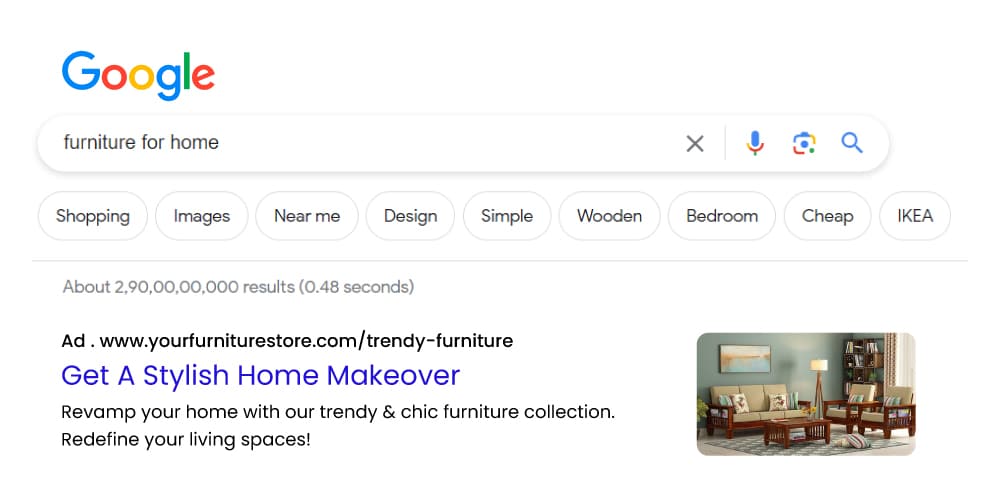
3. Include CTAs (Call to Action)
A right Call-to-Action (CTA) at the right place is the driving force that urges prospects to take action. A well-crafted CTA tells users what they should do next and creates a sense of urgency. Therefore, make sure to use persuasive language to encourage them to click, sign up, or make a purchase.
Use action-oriented words like “Buy Now,” “Sign Up Today,” “Limited Offer,” or “Get Started” to prompt immediate audience engagement. According to Hubspot, personalized CTAs convert 202% better than generic CTAs. For example, “Start your free trial today!” Therefore, clearly state what action you want your target audience to take.
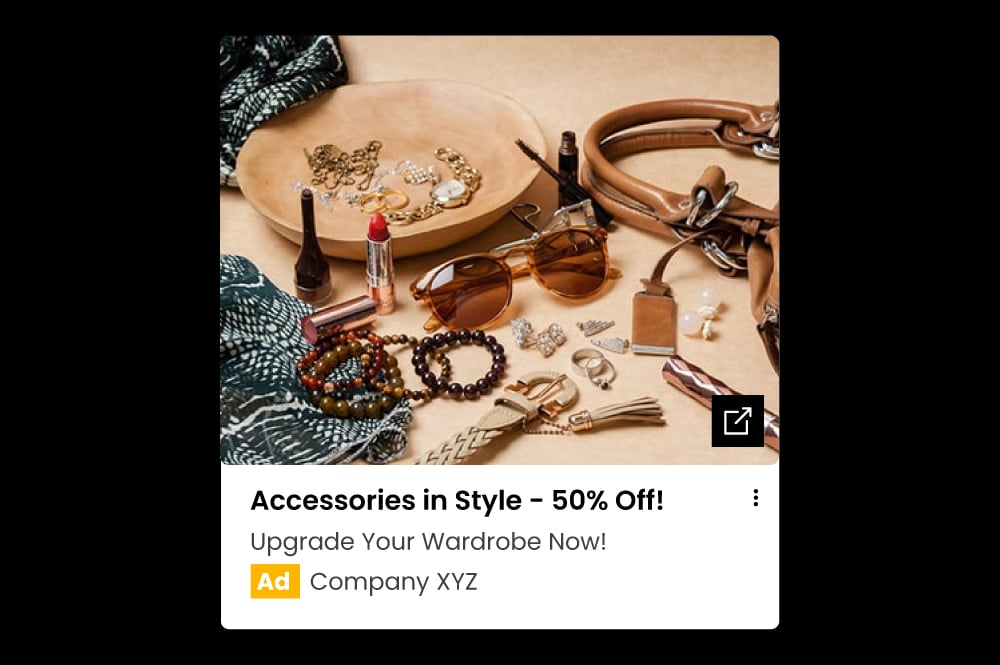
4. Create attention-grabbing headlines
In a sea of digital ads, a catchy ad headline is essential to stand out from the competition. Your ad copy headline should be compelling and pique curiosity. There are several ways to spice up your ad headline to grab the attention of your prospects:
Use social proof:
Including social proof in your ad copy can build credibility and trust. Highlight positive reviews, testimonials, or statistics to show that others have had a positive experience with your product or service.
Including social proof in your marketing copy can build credibility and trust. Highlight positive reviews, testimonials, or statistics to show that others have had a positive experience with your product or service.
When potential customers see that others have had a good experience with your product or service, they are more likely to become your brand loyalists.
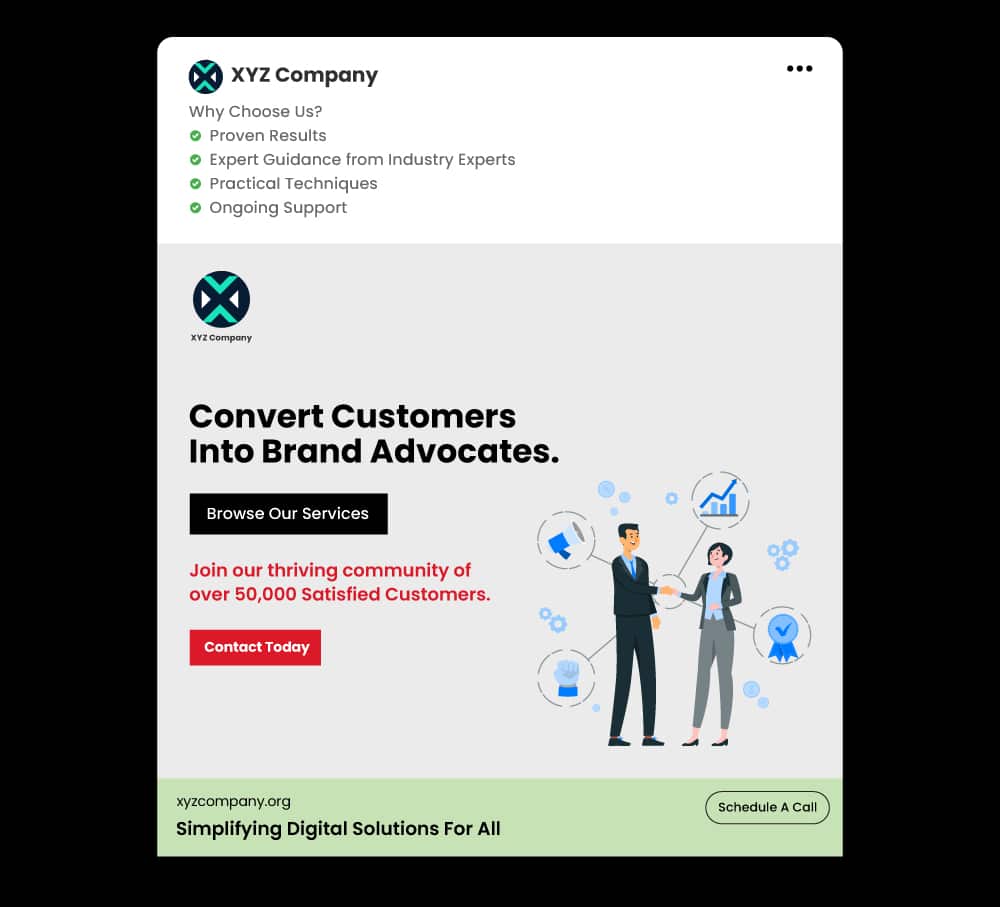
Use numbers and symbols:
Incorporate numbers and symbols in your advertising copy, such as percentages or dollar signs, to make it more visually appealing and stand out. For example, “Save 50% off” or “Limited time offer – Buy now!”
Use trigger and power words/phrases:
Use power or trigger words and phrases in your ad copy to capture attention and entice readers to continue reading your ad. Words like “exclusive”, “discover,” “save,” “easy,” “exclusive,” “free,” or “unlock” can grab attention and appeal to your audience’s desires. Therefore, remember to craft your ad copy using persuasive language that resonates with them.
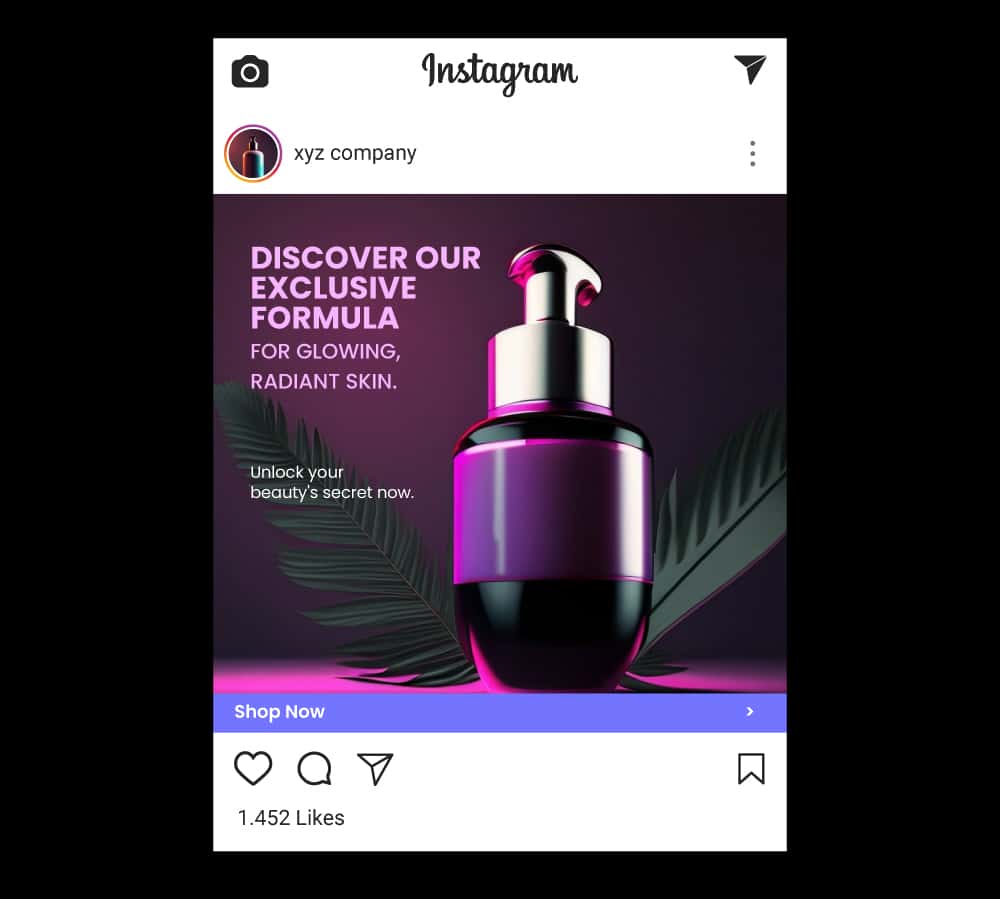
Keep it simple, clear, and concise:
Your ad copy should be easy to understand and digest. Therefore, Avoid using jargon or unnecessary complexity that might confuse or alienate your target audience. Instead, use concise sentences and bullet points to convey your message more effectively.
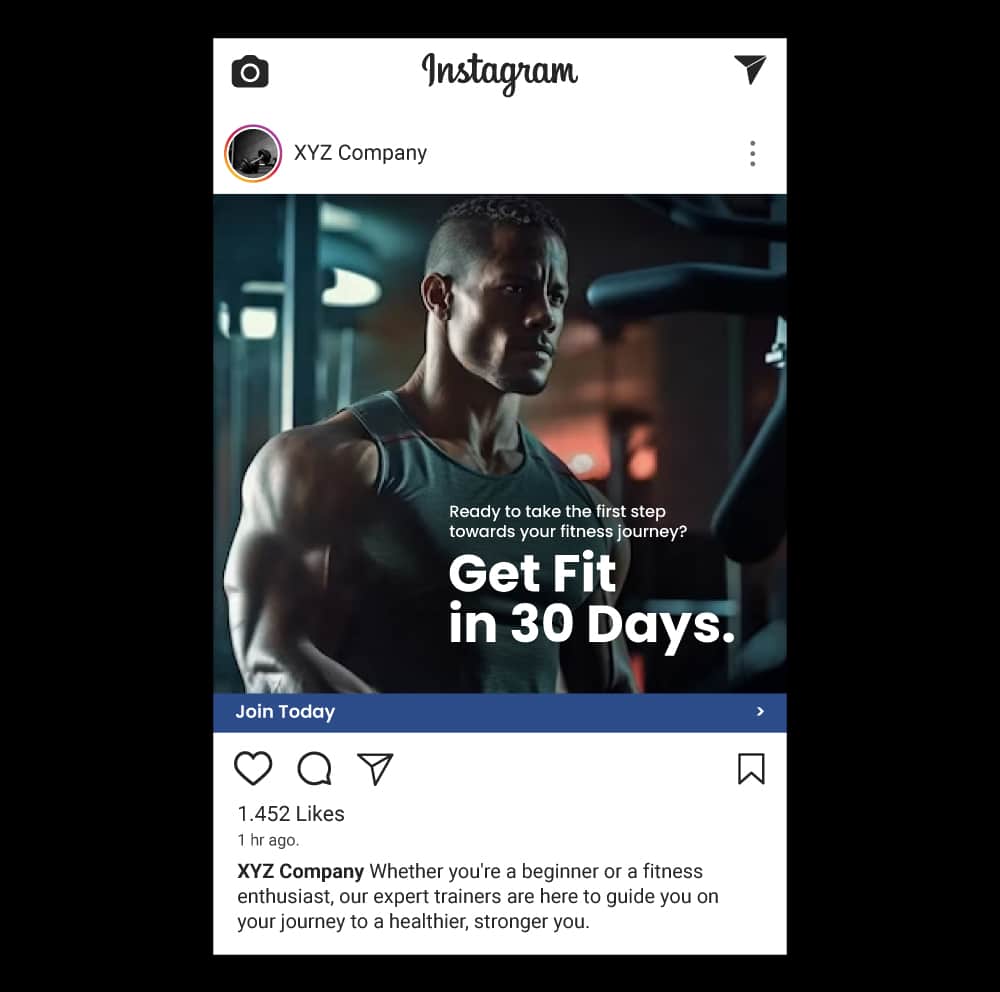
5. Optimize your copy for mobile users
Take into account the character limits that apply to different ad formats, such as headlines and descriptions. Make sure your ad copy fits within these limits for an optimal display to ensure optimal Ad optimization.
When it comes to online advertising, there are various types of advertising. For example, in social media advertising we different social media ads such as Facebook ads, Instagram ads, LinkedIn ads, and X ads. Then we have different types of Google ads, such as Google search ads, text ads, display ads, google shopping ads, etc.
Each of the ad types has different word limits and guidelines. Therefore while working on the advertising campaign, Consider the smaller screen size and shorter attention span of mobile users. Craft your ad copy to be easily scannable, visually appealing, and with clear CTAs for quick and seamless mobile advertising.
By following these tips, you can write compelling ad copy that engages your audience, drives clicks, and ultimately converts leads into customers.
Also read: Ten Google Ads Must-Do’s For The Holiday Season
Final Thoughts
In conclusion, mastering the art of persuasive writing is the key to unlocking success in the competitive world of digital advertising. Throughout this blog, we have explored five invaluable tips that can elevate your ad copy and help you make the most out of your Ad campaigns.
Here are some takeaways:
- Your brand messaging should speak to their deepest needs. This approach can ignite a powerful response, prompting them to take action.
- Highlighting the benefits of your product or service over mere features enables you to present a persuasive case.
- Focusing on the “why” behind your offering rather than the “what” can make your ad copywriting more engaging and appealing.
- Attention-grabbing ad headlines are essential for capturing your audience’s attention in a crowded digital space.
- Leveraging social proof is a powerful way to build credibility and trust.
- Strong CTAs make a difference.
Implement these tips, A/B test variations, and refine your ad based on performance insights. With these strategies, you can turn prospects into loyal customers and make your ad copy stand out.
Also read: Future of Digital Video Advertising and How to Leverage It
Happy ad copywriting!
Frequently Asked Questions
1. Can I use the word ‘free’ and prıce in a Google ad copy?
Yes, you can use the word ‘free’ in a Google ad copy, but you must ensure it complies with Google’s guidelines. ‘Free’ can be used when you genuinely offer something without any cost, such as a free trial or free download.
Regarding mentioning prices in ad copy, yes, you can include the actual price of the product or service you are promoting. However, the price mentioned in the ad copy must match the price displayed on the landing page to maintain ad relevance and provide a positive user experience.
2. Should I A/B test different ad copy variations?
Yes, you should definitely A/B test different ad copy variations. A/B testing (known as split testing as well), involves running two or more versions of an ad (or any marketing element) simultaneously to determine which version of ad copy performs better for achieving your desired objectives.
It helps you make data-driven decisions, optimize your business ads, and improve your ad campaign’s effectiveness over time.
While doing Ad testing, remember to test one element at a time for accurate results. For example, test different headlines, images, or call-to-action buttons while keeping other elements constant. By doing this, you can identify what resonates with your target audience. This will help you maximize your ROI and adapt to changing consumer preferences.
3. What are the key metrics to look into ad copy performance?
CTR (click-through rate), Conversion Rate, Quality Score, CPA (Cost-per-acquisition), ROAS (Return on Ad spend), Keyword Performance, A/B Testing, and Ad Copy Engagement are some of the metrics you can look for.
4. Should I include keywords in my ad copy?
Yes, including relevant keywords in your ad copy is essential for improving your ad’s online visibility and targeting the right audience. By incorporating keywords that match what people are searching for, you increase the chances of your ad appearing in relevant search results.
When including keywords in your ad copy, focus on using them naturally and seamlessly. Incorporate them into your headlines, and descriptions, and display URLs where appropriate. However, avoid keyword stuffing, as it can make your ad appear unnatural and negatively impact user experience.
Ultimately, the goal is to ensure that your ad copy aligns with the user’s search intent and provides them with the information they are looking for.
5. How can I make my ad copy stand out from competitors in Google Ads?
Here are some tips to help you achieve that:
Unique Selling Proposition (USP): Clearly communicate what makes your product or service unique and better than your competitors and sets you apart.
Compelling Headlines: Craft attention-grabbing headlines that instantly capture the viewer’s interest. Use powerful words, ask questions, or present a compelling offer to entice.
Persuasive Language: Focus on their needs, desires, and pain points, and explain how your product or service can solve their problems or fulfill their needs.
Ad Extensions: Utilize the ad extensions to provide additional information and visual appeal. Ad extensions such as call extensions, site link extensions, or review extensions can help your ad copy stand out and provide more value.

